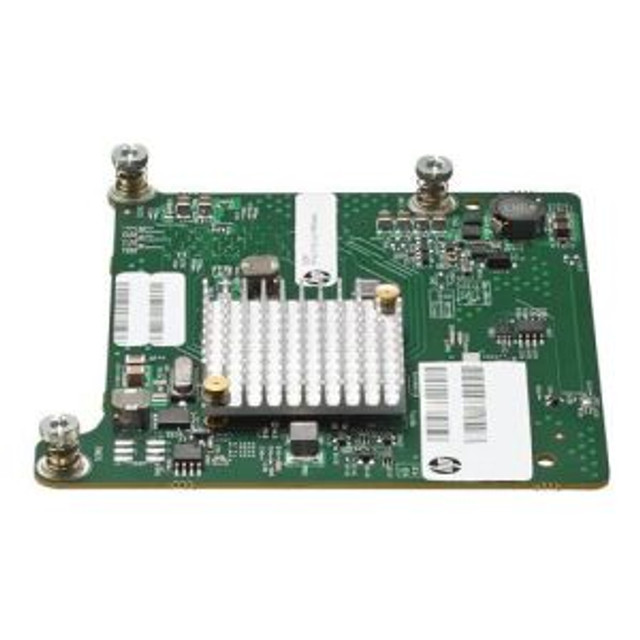
Interface modules play a pivotal role in modern computing by connecting various components of IT hardware and enabling seamless communication. As the digital landscape evolves, understanding the functions, types, and benefits of interface modules becomes crucial for anyone working with computer hardware. From enhancing system performance with Rambus memory to ensuring efficient data transmission, these modules are integral to IT infrastructure.
This article delves into the world of interface modules, their importance in IT hardware, and how they integrate with advanced technologies like Rambus memory to optimize computing systems.
1. What is an Interface Module?
An interface module is a hardware component that acts as a bridge between different devices or systems. It facilitates communication, data transfer, and compatibility, ensuring that various components work harmoniously.
Key Functions of Interface Modules
-
Data Transmission: Enables smooth data exchange between devices.
-
Protocol Conversion: Converts communication protocols to ensure compatibility.
-
System Integration: Connects disparate hardware components into a unified system.
Examples in Everyday Use
-
USB-to-serial adapters for legacy devices.
-
Network interface cards (NICs) for internet connectivity.
-
Memory interface modules for high-speed data processing.
2. Types of Interface Modules
Interface modules vary widely based on their application and functionality. Here are some common types:
a. Network Interface Modules These modules are essential for connecting devices to a network. They support Ethernet, Wi-Fi, and other networking protocols.
Applications:
-
Corporate LAN setups.
-
IoT device connectivity.
b. Memory Interface Modules These modules connect the processor to memory units, ensuring efficient data flow. Rambus memory interface modules, for instance, are known for their high-speed performance and low latency.
c. Peripheral Interface Modules These modules facilitate the connection of peripherals like printers, scanners, and external storage devices.
d. Sensor Interface Modules Common in industrial applications, these modules connect sensors to control systems, enabling data collection and automation.
3. The Role of Rambus Memory in Interface Modules
Rambus memory has revolutionized the way data is processed and transmitted in modern computing systems. Let’s explore its impact on interface modules:
a. High-Speed Data Processing Rambus memory interface modules are designed for rapid data transfer, making them ideal for high-performance computing and gaming systems.
b. Energy Efficiency These modules consume less power, making them suitable for energy-conscious applications, such as data centers and mobile devices.
c. Enhanced Scalability Rambus memory technology supports scalability, allowing systems to handle increasing workloads efficiently.
Applications of Rambus Memory Interface Modules
-
High-performance servers.
-
AI and machine learning systems.
-
Graphics processing units (GPUs).
4. Benefits of Using Interface Modules in IT Hardware
a. Improved Compatibility Interface modules ensure that devices with different communication protocols can work together seamlessly.
b. Enhanced System Performance By optimizing data flow and reducing bottlenecks, these modules improve overall system performance.
c. Cost-Effectiveness Instead of replacing entire systems, interface modules enable upgrades and integration, saving costs.
d. Customizability Interface modules can be tailored to meet specific system requirements, providing flexibility in design and functionality.
5. Challenges in Implementing Interface Modules
Despite their advantages, interface modules come with certain challenges:
a. Compatibility Issues Ensuring compatibility between legacy and modern systems can be complex.
b. Cost of High-Performance Modules Advanced interface modules, such as those using Rambus memory, may have higher upfront costs.
c. Technical Complexity Configuring and integrating interface modules often requires specialized knowledge.
Solutions to Overcome Challenges
-
Investing in modular and scalable interface modules.
-
Partnering with experienced IT hardware professionals.
-
Regularly updating systems to maintain compatibility.
6. Future Trends in Interface Module Technology
The interface module landscape is rapidly evolving, driven by advancements in IT hardware and computer hardware. Key trends include:
a. AI-Powered Interface Modules Artificial intelligence is being integrated into interface modules to optimize data transfer and improve decision-making processes.
b. Miniaturization As devices become smaller, interface modules are being designed to occupy minimal space while maintaining high performance.
c. 5G Integration With the rise of 5G networks, interface modules are being adapted to support faster data transmission rates.
d. Sustainable Solutions Eco-friendly materials and energy-efficient designs are becoming standard in interface module manufacturing.
7. How to Choose the Right Interface Module for Your System
Selecting the right interface module depends on your system requirements and intended applications. Here are some factors to consider:
a. Compatibility Ensure the module supports your existing hardware and communication protocols.
b. Performance Requirements Choose modules with sufficient speed, bandwidth, and capacity for your workload.
c. Budget While advanced modules may cost more, consider their long-term benefits in terms of efficiency and scalability.
d. Vendor Support Opt for modules from reputable manufacturers that offer reliable customer support and warranties.
8. Practical Applications of Interface Modules
Interface modules are indispensable in various industries and scenarios. Here are some examples:
a. Data Centers High-speed memory interface modules streamline data processing and reduce latency in large-scale operations.
b. Healthcare Sensor interface modules connect medical devices, ensuring accurate data collection and analysis.
c. Automotive In connected cars, interface modules integrate sensors, cameras, and communication systems for enhanced safety and performance.
d. Manufacturing Industrial interface modules enable automation and real-time monitoring in production lines.
Conclusion
Interface modules are the unsung heroes of modern IT infrastructure. They bridge gaps between disparate components and ensure seamless communication. From enabling high-speed data processing with Rambus memory to supporting innovative technologies like 5G, these modules are essential for optimizing system performance.
Understanding their types, benefits, and applications empowers businesses and individuals to make informed decisions when upgrading or designing IT hardware systems. As technology continues to advance, interface modules will remain at the forefront of innovation, driving efficiency and connectivity in every domain.





Leave a Reply